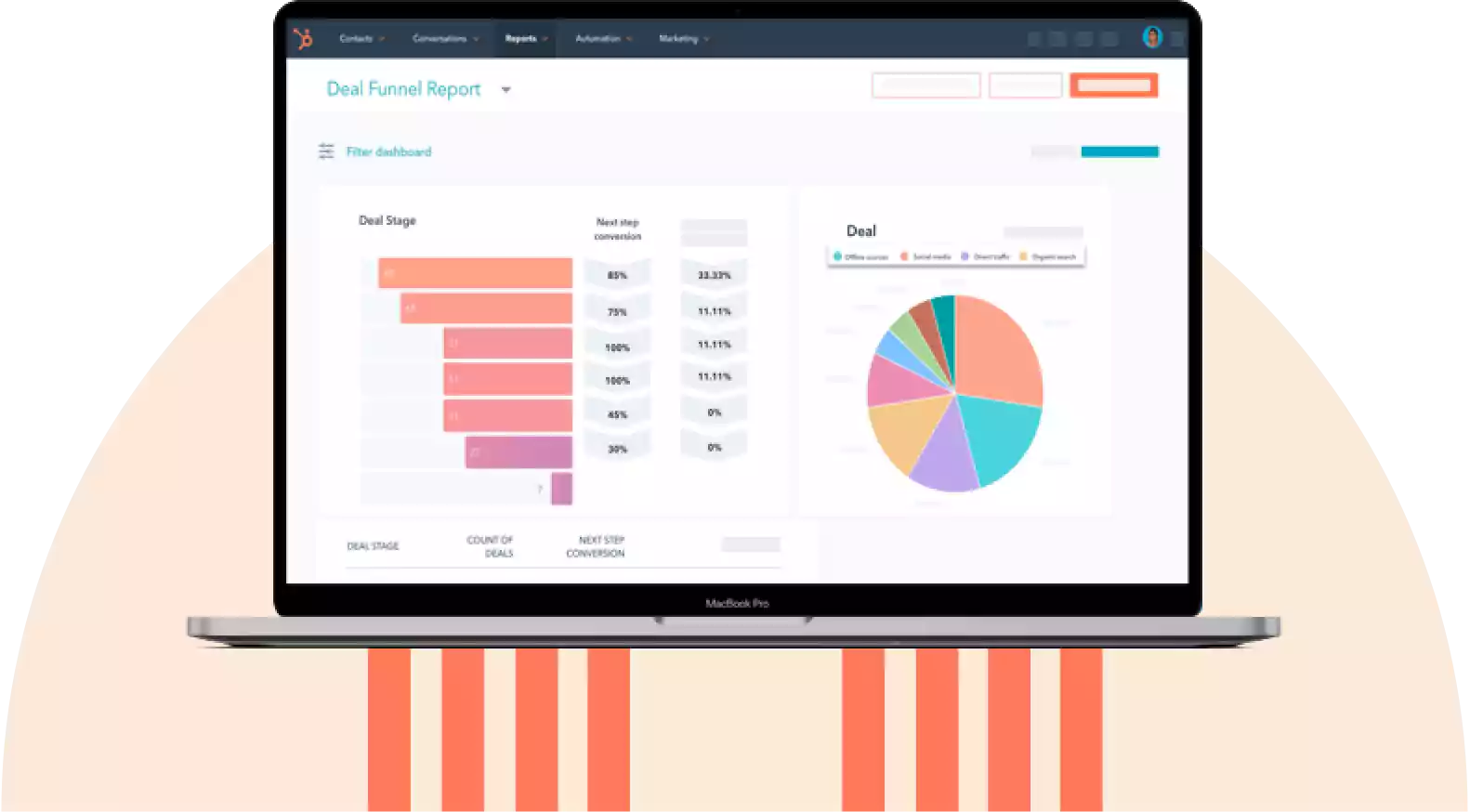Why Migrate from Salesforce to HubSpot?
It used to be a commonly held belief that HubSpot is just a marketing platform but isn't as strong for sales or that it isn't suitable for enterprise businesses. While this may have been true ten years ago, HubSpot has advanced significantly, and we have seen more and more companies opt to bring their commercial functions from Salesforce into HubSpot. It seems there is a new king in town.
So why are so many companies making the switch to HubSpot?
1. The Centralisation of Tools
HubSpot’s integrated platform combines CRM, marketing, sales, and customer service, providing a far more seamless experience managing the platform and data than Salesforce.The tagline for this has long been known as "crafted, not cobbled together", and
2. The Total cost of ownership
Costs of Integrations in SalesForce
When comparing the cost of HubSpot and Salesforce, many businesses overlook the additional tools needed with Salesforce to match the functionality of HubSpot. Below are examples of the sorts of tools required to achieve the same functionality as HubSpot
Online Marketing
- Webpages & Blog - WordPress (plus additional plugins)
- Landing Pages - Unbounce
- SEO tools - Moz
- Email Marketing - Mailchimp
- Web Chat - Snap Engage
- Social Management - Hootsuite
Customer Relationship Management
- CRM: Salesforce Subscription
- Salesforce to Slack - Troops.ai
Sales Enablement
- Email tracking - Yesware
- Online Video - Vidyard
- Automation - Zapier
- Meeting tool - Calendly
- Document tracking - Doc Send
- Quoting Tool - Proposify
- E-signature - Docusign
- Playbooks - Seismic
Service
- Conversational Inbox - Front
- Knowledgebase - HelpJuice
- Surveying & feedback - SurveyMonkey
- Live Chat - Snap Engage
Cost of managing data with Salesforce
Managing data across multiple spreadsheets, reconciling inconsistencies, and organizing information can be time-consuming and stressful. As you increase the number of systems, it becomes more challenging to achieve a "single source of truth." However, integrating your marketing, sales, and service systems into a single CRM can help you avoid this problem. This is particularly important if you are UK-based, as GDPR make data management even more crucial.
Cost of Risk Management in Salesforce
Managing data across multiple spreadsheets, reconciling inconsistencies, and organizing information can be time-consuming and stressful. As you increase the number of systems, it becomes increasingly challenging to achieve a "single source of truth." However, you can avoid this problem by integrating your marketing, sales, and service systems into a single CRM.
Cost of Brand Management with Salesforce
Maintaining a consistent brand across various web, email, social media, chat, sales, and service channels can be challenging. Each tool you use to communicate with your audience requires careful monitoring to ensure a consistent brand experience. However, all-in-one systems like HubSpot can make it easier to maintain your brand because all your logos, colours, designs, and assets are pulled from a single source.
Cost of training in Salesforce
Learning a new system every time you purchase one can be challenging. It's essential to choose a system that can adapt to changes in consumer behaviour. With each new tool and update, there is a new set of things to learn. Learning is time-consuming, and you may not have enough time to spare. Fortunately, HubSpot provides complete courses, short modular lessons, and award-winning support to help you navigate the learning process.
3. Ease of Use
In our experience, you can have the best systems and processes in the world, but without adoption, none of it matters.
Salesforce has a relatively steep learning curve and requires technical expertise to adapt most of the system. This can be a significant impediment to achieving adoption.
HubSpot is known for its user-friendly interface and intuitive design, making it easier for non-technical users to adopt and navigate. This simplicity and ease of use are often key factors in switching to HubSpot.
HubSpot provides complete courses, short modular lessons, and award-winning support to help you and your team navigate the learning process


Customer Support and Training
HubSpot provides 24/7 customer support and comprehensive training through HubSpot Academy.
And the support isn't your standard tech support. From our experience, HubSpot support is exceptional, and on the whole, the staff genuinely want to help you find a solution. If your package includes phone support, staff will happily jump on a video call to help support you.
Scalability
Salesforce is often considered to be software designed for "enterprise" level businesses, which is why many ambitious companies choose it.
While HubSpot is popular among smaller businesses, it also provides robust and highly customisable enterprise solutions. This is especially advantageous for startups and scale-ups because they can start with a smaller package and upgrade to a higher package as their business needs grow and become more complex.
In contrast, the Salesforce system can sometimes lead to over-engineering for smaller companies, increasing complexity and risk. Over time, this complexity can compound and become harder to manage.
Migration steps
Pre-Migration
- Set Goals: Define objectives for the migration.
- Document Current Processes: Utilize process maps and the SIPOC method (Suppliers, Inputs, Process, Outputs, Customers) to analyze and improve current workflows.
- Adjust Expectations: Understand feature differences between Salesforce and HubSpot.
- Prepare Your Records: Audit and clean Salesforce data.
Migration
- Export Data: Transfer data from Salesforce to CSV files.
- Migrate & Integrate: Upload data to HubSpot and connect with other applications.
- Recreate & Optimize: Set up your sales processes in HubSpot, aligning them with the improved processes identified in the pre-migration phase.
Post-Migration
- Execute & Optimize: Implement and refine marketing and sales elements in HubSpot.
- Validate Process Adherence: Monitor user adherence to new processes and gather feedback.
- Training Material Development: Create and distribute tailored training materials for HubSpot.
- Continuous Process Improvement: Regularly review and refine processes based on user feedback and performance data.
-1.png?width=200&height=71&name=Black%20And%20Beige%20Modern%20Simple%20Aesthetic%20Minimalist%20Dialogue%20Agency%20Logo%20(1)-1.png)